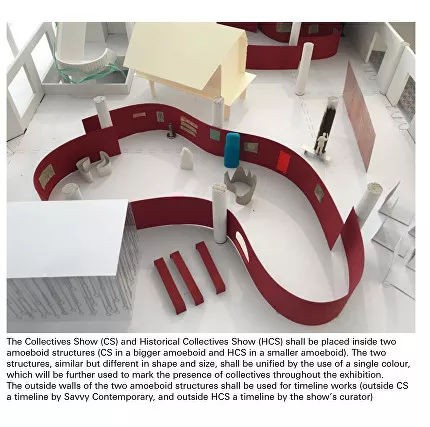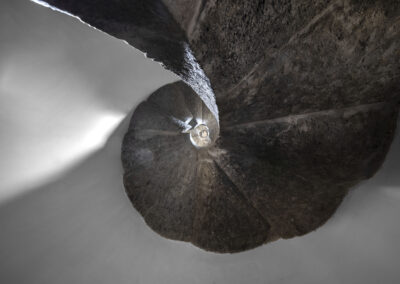
CATEGORY
SustainabilityYEAR
2020DURATION
1 yearLOCATION
OnsiteFORMAT
WEBSITE
https://www.dascompendium.com/21/4594955105TARGET
Reduce carbon footprint, sustainable exhibition designSrijan-Abartan
A Workshop for Exhibition Making and Unmaking led by common-interest with support from Pro Helvetia – Swiss Arts Council How is the practice of exhibiting – be that of art, design, history, or science – fundamentally implicated in the imminent threats of climate change? And, conversely, how can exhibition-making help us attain political momentum and agency around ecology? How can it support communities fighting on the frontline of climate change who are leading the way in safeguarding our collective future? These are the fundamental questions that prompted the start of a workshop for exhibition making and unmaking at the heart of DAS. Srijan-Abartan is a cross-cultural and cross-disciplinary research project aimed at developing new tools and methodologies for creating culturally rooted, ecologically sustainable, and socially responsible exhibition displays. Its international team consists of artists, designers, researchers, architects, engineers, exhibition-makers, curators, and producers from Bangladesh, Switzerland and beyond. They work alongside to discuss, problematise, envision, conceive, conceptualise exhibition displays, and support structures that take sustainability as their core concern. The generated design strategies and solutions developed collaboratively make up the exhibition design for the DAS 2020. Nodding to the summit’s impetus of igniting a movement beyond the confines of an art exhibition, Srijan-Abartan’s process, methodology, and learning outcomes will be compiled and shared in the form of open access research. The goal is to provide thinking tools to help others also to start reimagining exhibition-making as a practice of resistance that strives for more just and sustainable forms of living. Background Often referred to as the ‘ground zero’ for climate change, Bangladesh has long been trailblazing innovative strategies to adapt to threats such as rising sea level, water-logged land, and increased salinity. Ecology and sustainability are core concerns for DAS which happens bi-annually at the Shilpakala Academy. Dr. Huraera Jabeen, a core member of Srijan-Abartan, assessed the environmental impact of DAS 2018 utilising the Equity Share Approach. The aim is to create a baseline to determine the upcoming DAS 2020. The operational process will follow PDCA (Plan-Do-Check-Act). Based on the information received on materials, venue design, communication materials produced, estimated waste generated, and energy usage, the estimated total emission for DAS 2018 comes to 18043 tons of CO2 emission. Which is equivalent to:- An average car could be driven for 80.02 years non-stop
- A 747 could fly for 23.73 days non-stop
- Taking 3,538 cars off the road for a year
- Producing 1,357 tons of Beef
- A 42-inch LCD TV could be used for 12,334 years continuously
LINKS
FILES
AUDIO






